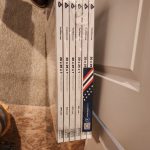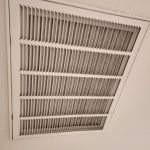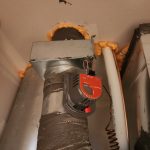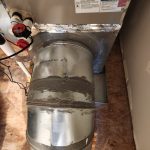As it starts to heat up in Southwest Washington the last thing you need is your home’s AC unit to stop working. So, what’s causing it? We can’t know until we actually come to your home. But there are a few things that can be checked to possibly solve this issue before calling an AC repair technician.
Check the AC Unit Thermostat
Make sure that your thermostat is set to cool and the temperature setting is below the room temperature . Check to see if the thermostat indicates it is calling for the AC to be on.
Check the AC Unit’s Air filter
- Find the systems air filter, the same filter is used for both heat and AC
- Check to see if the filter is dirty (if you can barely see light coming through it, it’s too dirty).
- Change the filter if it’s dirty.
A dirty air filter blocks air from returning to the AC, reducing airflow over the evaporator coil, causing it to ice up. This causes a low-pressure switch to trip and shut down your AC’s compressor (the heart of your air conditioner) to prevent it from being damaged. So, you need to change the air filter to prevent all that.
Check the circuit breakers
- Find your electrical panel
- Look for any tripped breakers
- Turn the tripped breaker to the “off” position
- Turn that same breaker to the “on” position
- If the breaker trips again immediately or after several minutes, don’t reset the breaker again, call a professional for help.
The AC may not be working because its circuit breaker tripped, preventing any electric current from powering the system. If the breaker trips immediately you don’t want to reset it again because you most likely have a short circuit or a grounded circuit. It may also mean that you need to replace the circuit breaker since they wear out over time or after multiple trips.
Clear the Condensate Drain
- Get a wet/dry vacuum.
- Find the main condensate drain line outside your home (usually a 3/4 inch PVC pipe near the outside unit).
- Connect the wet/dry vacuum’s hose to the condensate drain line and turn it on to suck out any obstructions (like algae).
- Wait 3 minutes or so to clear the drain line.
When an air conditioner runs, condensation forms on the cold evaporator coil. The condensation evacuates your home via the condensate drain line. But if the drain line gets clogged with gunk, the water overflows and a drain float switch will shut down your AC to prevent any water damage. The wet-dry vacuum should help unclog any blockages.
AC still won’t turn on? Call an AC Pro in Vancouver, WA
If the above methods didn’t work, you have a bigger problem that requires an air conditioning repair technician to fix. We have been serving Clark County and the Vancouver metro area for over 25 years.








